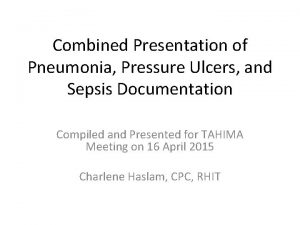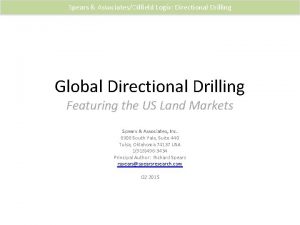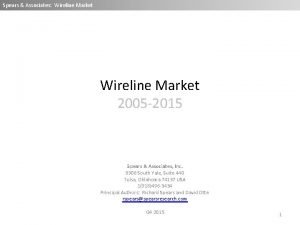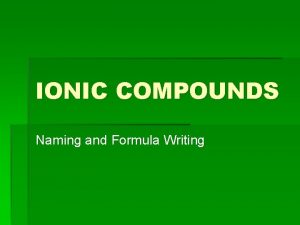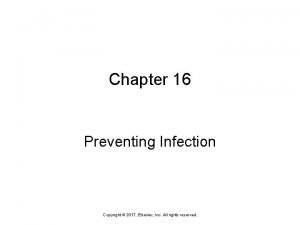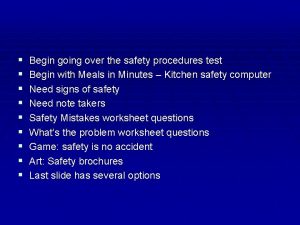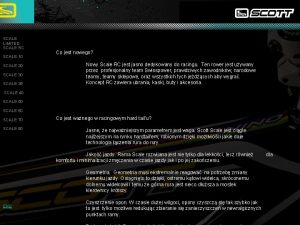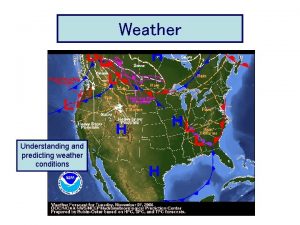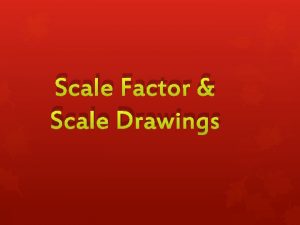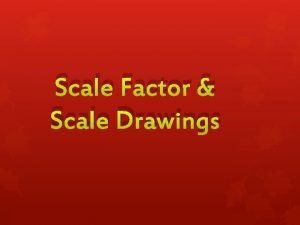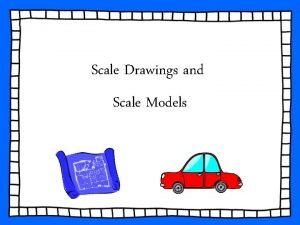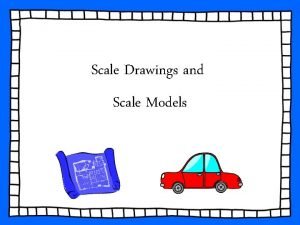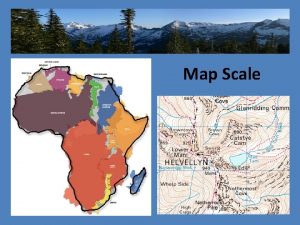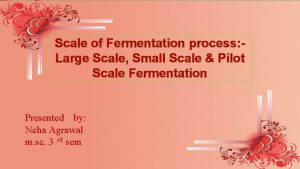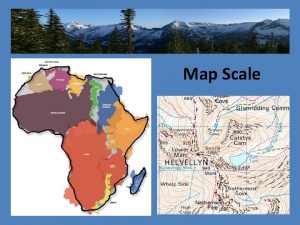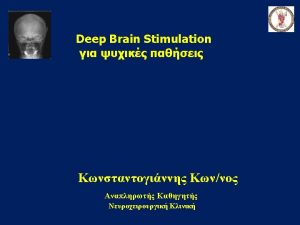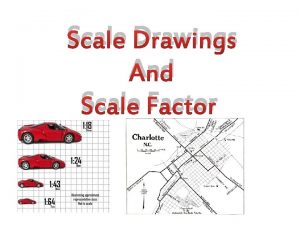Understanding Predicting and Preventing Oilfield Scale This may





















- Slides: 21

* Understanding, Predicting and Preventing Oilfield Scale

This may be the only time you get to review this part of oilfield chemistry, so we will go deeper than the numbers * The thermodynamic basis and the models currently in use

Ø Names used for S q Oilfield names o o Scale Tendency (ST), Scale Ratio (SR) Scale Index (SI) is log 10 value of S q Scientific names o Saturation Ratio (SR, ), Supersaturation (S) Ø S is thermodynamic driving force for solids to precipitate or dissolve q Supersaturated (S>1 or SI>0): precipitates spontaneously q Subsaturated (S<1 or SI<0): dissolves spontaneously q Saturated (S=1 or SI=0): neither dissolves nor precipitates *

Definition: Scale tendency is the ratio of ion activity product (IAP) to the solubility product constant (Ksp) Used in lab and field Used in thermodynamic software *

• The equilibrium constant, Ksp is unitless • The activity is therefore also unitless… • S is therefore unitless… *


1) Precipitation reaction 2) Equilibrium equation (solid phase exists) =1. 0 by definition 3) Rearrange. If Na. Cl solid is in equilibrium with water, then: *

If Na. Cl is not at equilibrium (no solids) or if we do not know, then: Where; S=1, solid exists and system is at equilibrium S<1, water is subsaturated and no solids will form S>1, water is supersaturated and solids will form This is the Scale tendency equation for Na. Cl, and other scale follow the same general form *

For calcite: The scale tendency equation is: *

For barite: The scale tendency equation is: *

For gypsum: And scale tendency equation is: *

For fluorite: The scale tendency equation is * We will discuss the details of each variable and the significance of this equation in these slides

Scale Tendency Equation Ksp (25 C, 1 atm) Fe. CO 3, siderite Fe. CO 3 = Fe+2 + CO 3 -2 Ksp, siderite = 3. 9 x 10 -11 Fe. S, mackinawite Fe. S = Fe+2 + S-2 Ksp, mackinawite = 4. 5 x 10 -17 Fe. S, pyrrhotite Fe. S = Fe+2 + S-2 Ksp, pyrrhotite = 7. 6 x 10 -19 Fe(OH)3, amorphous Fe(OH)3 = Fe+3 + 3(OH)- Ksp, Fe(OH)3, am = 3. 2 x 10 -38 Ca. CO 3, aragonite Ca. CO 3 = Ca+2 + CO 3 -2 Ksp, aragonite = 5. 8 x 10 -9 Ca 0. 5 Mg 0. 5 CO 3, dolomite Ca 0. 5 Mg 0. 5 CO 3 =0. 5 Ca+2 + 0. 5 Mg+2 + CO 3 -2 Ksp, dolomite = 1. 7 x 10 -17 Si. O 2, amorphous Si. O 2 = Si. O 2 Ksp, Si. O 2, am = 1. 9 x 10 -3 Ca. CO 3, calcite Ca. CO 3 = Ca+2 + CO 3 -2 Ksp, calcite = 2. 43 x 10 -9 *

Calculate *

Calculate *

Calculate *

measured Na, ppm (mol/kg) Cl, ppm (mol/kg) 86, 000 (3. 74) 145, 000 (4. 09) calculated Ksp (@T, C / P, atm) Na Cl 38. 2 (@25 / 1) 0. 84 (symmetry) *

Na, ppm (mol/kg) Cl, ppm (mol/kg) Ksp (@T, C / P, atm) Na Cl S (w/o ) S (with ) 87, 250 134, 549 35. 8 (@90/70) 0. 74 0. 52 0. 28 147, 250 225, 414 36. 5 (@125/200) 1. 11 1. 12 1. 37 10, 800 19, 850 41. 3 (@4/100) 0. 69 0. 006 0. 003 (symmetry) *

Cation ppm (mol/kg) Anion Act coef (25 C, 1 atm) ppm (mol/kg) Act coef (25 C, 1 atm) Na+ 14, 500 (0. 63) 0. 665 Cl- 22, 510 (0. 69) 0. 681 K+ 1, 234 (0. 032) 0. 612 SO 4 -2 2, 142 (0. 022) 0. 087 Ca+2 1, 420 (0. 035) 0. 253 HCO 3 - 158 (4. 0 e-3) 0. 555 Ba+2 2 (1. 4 e-5) 0. 207 CO 3 -2 (1. 18 e-5) 0. 093 Assemble necessary variables (from software or literature) Plug in data and calculate Answer: * ST=3. 99

Scale Fe. CO 3, siderite Fe. S, mackinawite Fe. S, pyrrhotite Fe(OH)3, amorphous iron hydroxide, rust Ca. CO 3, aragonite Ca 0. 5 Mg 0. 5 CO 3, dolomite Si. O 2, amorphous Scale Tendency Equation

 Braden scale score
Braden scale score Braden scale for predicting pressure sore risk
Braden scale for predicting pressure sore risk Spears and associates oilfield market report
Spears and associates oilfield market report Spears and associates hydraulic fracturing market report
Spears and associates hydraulic fracturing market report Lj trade
Lj trade Digital oilfield solution
Digital oilfield solution Hours of service examples
Hours of service examples Chapter 24 lesson 2 preventing and treating stds
Chapter 24 lesson 2 preventing and treating stds Chapter 9 resolving conflicts and preventing violence
Chapter 9 resolving conflicts and preventing violence Chapter 14:1 using body mechanics
Chapter 14:1 using body mechanics Chapter 9 resolving conflicts and preventing violence
Chapter 9 resolving conflicts and preventing violence Chapter 13:2 preventing accidents and injuries
Chapter 13:2 preventing accidents and injuries Makalah previewing and predicting
Makalah previewing and predicting The aim of previewing is
The aim of previewing is The evolution of crm is reporting analyzing and predicting
The evolution of crm is reporting analyzing and predicting Predicting and naming ionic compounds
Predicting and naming ionic compounds Chapter 20 preventing kitchen accidents
Chapter 20 preventing kitchen accidents Chapter 16 preventing infection
Chapter 16 preventing infection Preventing kitchen accidents worksheet
Preventing kitchen accidents worksheet Robert vischer empathy theory advantages
Robert vischer empathy theory advantages Chapter 4 preventing injuries through fitness
Chapter 4 preventing injuries through fitness Chapter 15 preventing infection
Chapter 15 preventing infection
